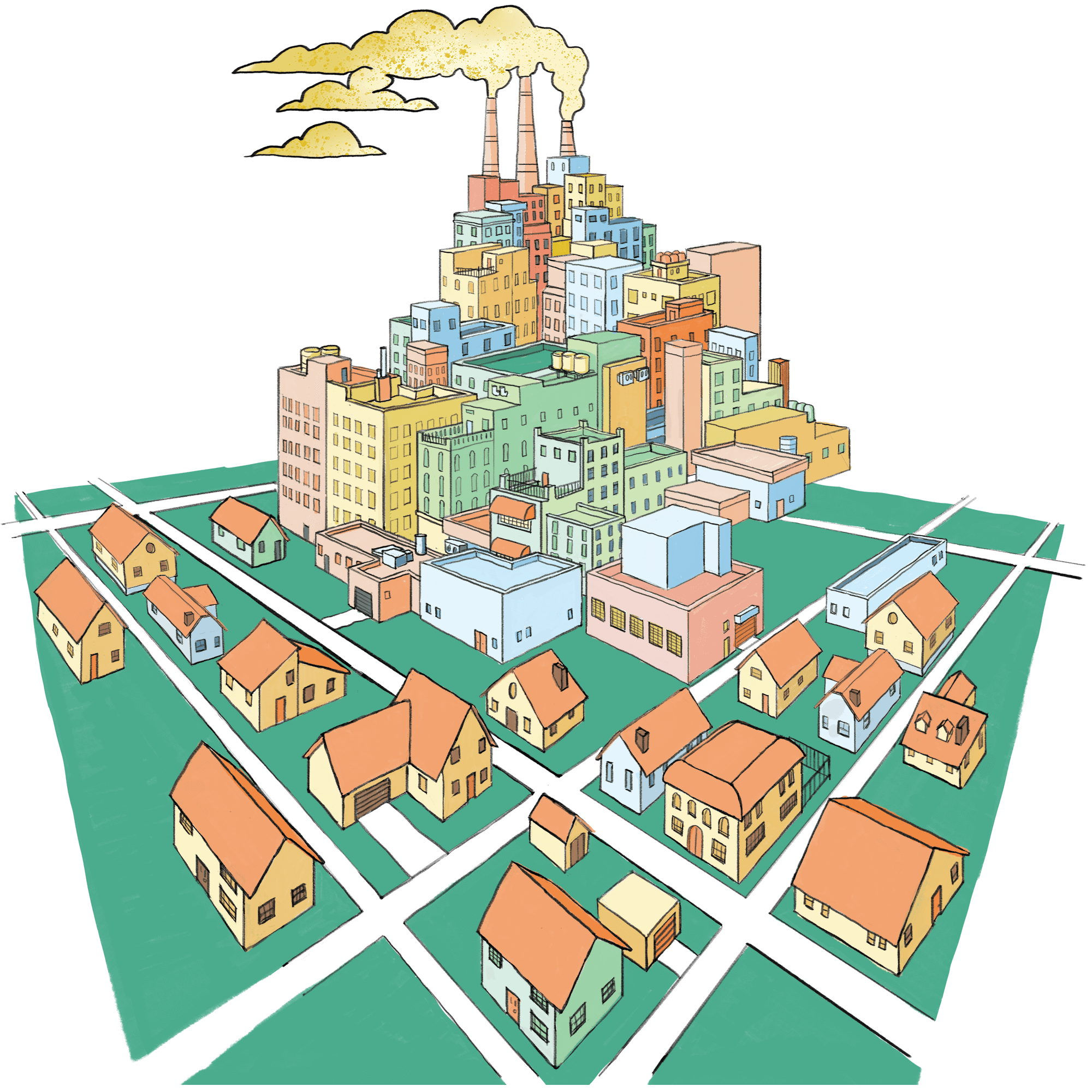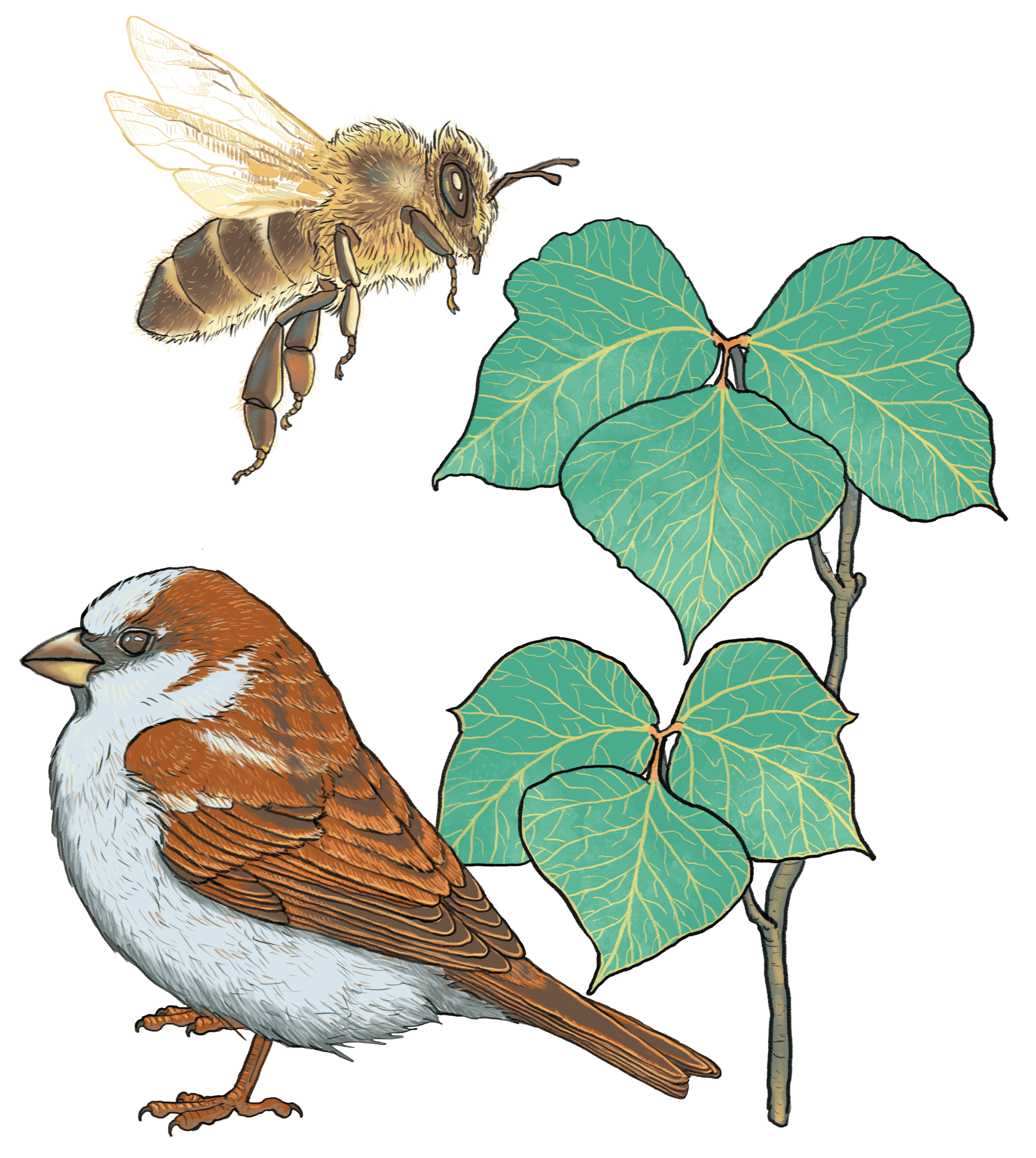Insect Apocalypse
Insect Decline and Climate Change
Urbanization & pollution
Some entomologists estimate that we are losing 10–20% of all the insects on Earth every decade. This loss is alarming!
When insects disappear, we also lose all the important ecological and agricultural services they provide, including pollination and food sources for other animals.
There is no single reason why insects are vanishing so rapidly. Some factors leading to their loss include urbanization, pollution, pesticide use, loss of habitat, introduced species, and climate change. If there were a single factor leading to insect declines it would be easier to stop or slow the process.
Farmers and growers sometimes use pesticides to control insects that eat or damage their crops. However, they work hard to prevent pesticides from affecting beneficial insects. Despite their efforts, wind and rain can inadvertently spread pesticides to other insect populations. As the human population continues to grow, we need more land to build our homes and grow our food, displacing insects and other organisms.
When we travel or receive shipments, we can inadvertently introduce species that are very good at outcompeting native insects. Such invasive species have typically left behind the pathogens and predators that keep them in check in their home territory. The plants, animals, or fungi that they feed on in their new habitat are not usually adapted to them, so they do not have a physical or chemical defense against these new pests. Non-native insects can also introduce new pathogens that affect native species, especially plants. They may also interbreed with related native species, potentially causing them to go extinct.
Climate change has a profound negative impact on insects. Currently we use about 11% of the planet’s land to grow crops, and active grazing uses about another 30%.
As climatic conditions such as average temperature and rainfall change in a particular area, some insects may no longer be adapted to survive there. The only solution is to move, but many insects cannot migrate as fast as temperatures are expected to change. Even if they can migrate, they may not find a new suitable habitat. Many insects also need specific food sources or habitats to build their homes, so those resources would also have to be present for them to survive.
Pesticide use
Loss of habitat
Invasive species
Other insects may benefit from climate change in a way that is harmful to humans and native ecosystems. For example, the hemlock wooly adelgid has spread northward in the U.S. as temperatures have warmed, devastating eastern hemlock trees. And mosquito-borne diseases like Zika will likely spread beyond tropical regions as the Earth warms.
Hemlock woolly adelgid on hemlock branches.
Mosquito.
Due to these reasons and many more, scientists fear we have entered the early stages of a mass extinction. BUT THERE IS HOPE!
Some locations are not seeing a massive insect die-off. Data from these areas may help entomologists protect insects that are experiencing an “Insect Apocalypse.”
The Cornell University Insect Collection houses important baseline data used in these studies, which will continue to grow as we keep documenting insect populations and diversity.
Did You Know 🔍
Many researchers who measure insect declines use museum collections to study changes in biodiversity and number of individuals.
The Emerald Ash Borer
Sometimes invasive species can knock out important native species, disrupting entire ecosystems.
The emerald ash borer (Agrilus planipennis) is sweeping across New York, killing most of our native ash trees. This could cause the dramatic decline or extinction of nearly 100 North American insect species that only feed on ash. In addition, dead ash trees are often replaced by non-native plants that do not support as many native insects.









